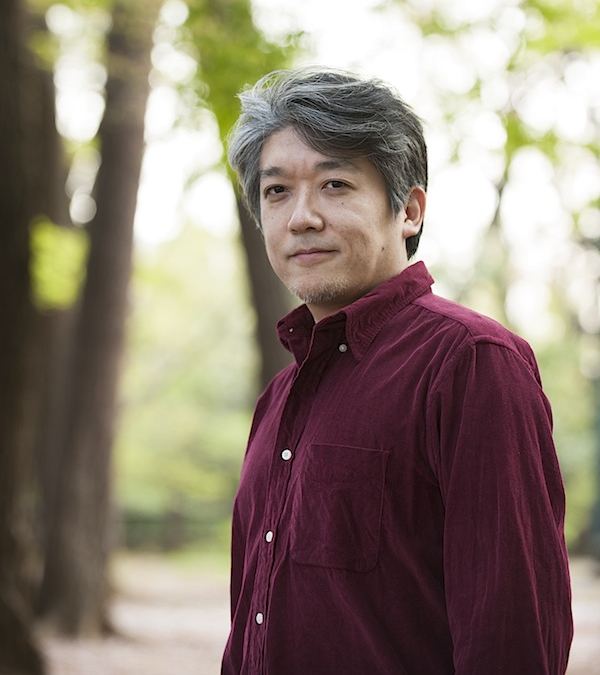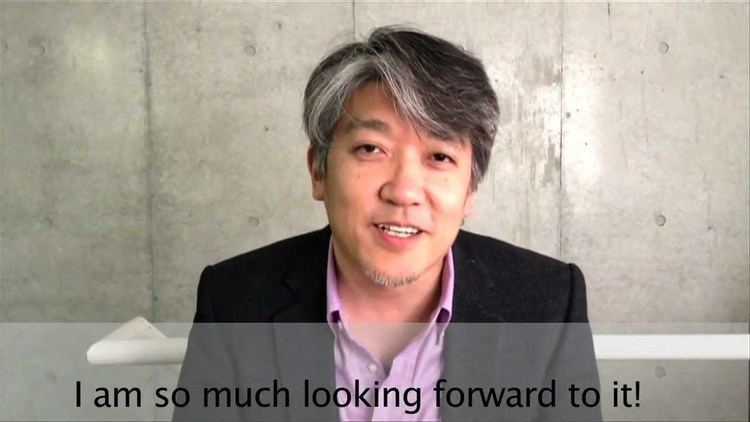Native name 浜渦 正志 Role Composer Instruments Piano Spouse Matsue Hamauzu | Years active 1996–present Parents Akimori Hamauzu Name Masashi Hamauzu | |
 | ||
Genres Electronicclassicalambientvideo game music Occupation(s) Composerarrangerpianistlyricist Albums Music of Final Fantasy XIII, Final Fantasy XIII‑2 Offi, Piano Collections: Final Fant, Lightning Returns: Final Fant, Vielen Dank | ||
Masashi Hamauzu(浜渦正志) tribute (Final Fantasy XIII composer) part 1
Masashi Hamauzu (浜渦 正志, Hamauzu Masashi, born September 20, 1971) is a Japanese composer, arranger, pianist, and lyricist. Hamauzu, who was employed at Square Enix from 1996 to 2010, was best known during that time for his work on the Final Fantasy and SaGa video game series. Born into a musical family in Germany, Hamauzu was raised in Japan. He became interested in music while in kindergarten, and took piano lessons from his parents.
Contents
- Masashi Hamauzu tribute Final Fantasy XIII composer part 1
- Fave vgm 988 born anew masashi hamauzu
- Early life
- Career
- Musical style and influences
- References

Hamauzu was hired by Square as a trainee, and his debut as a solo composer came the following year when he scored Chocobo no Fushigina Dungeon. He has collaborated with his friend and fellow composer Junya Nakano on several games, and has worked closely with synthesizer programmer Ryo Yamazaki on most titles since SaGa Frontier 2.

After Nobuo Uematsu left Square Enix in 2004, Hamauzu took over as the leading composer of the company's music team. He was the sole composer for Final Fantasy XIII. He has also become a renowned piano arranger, and has arranged a number of albums, including Yasunori Mitsuda's Sailing to the World piano score in 2006. His music incorporates various styles, although he mostly uses classical and ambient music in his pieces. In 2010, Hamauzu left Square Enix to start his own studio, MONOMUSIK.
Fave vgm 988 born anew masashi hamauzu
Early life
Born in Munich, Germany, Hamauzu's mother was a piano teacher and his father, Akimori Hamauzu, an opera singer. He developed an interest in music while in kindergarten. Growing up in Germany, Hamauzu received piano and singing lessons from his parents and created his first original compositions during high school. After his brother, Hiroshi, was born, the family moved to Osaka. He enrolled in the Tokyo National University of Fine Arts and Music, where he joined a student ensemble as a pianist. Hamauzu met his wife, Matsue Hamauzu (née Fukushi), at the university, and they have two children. Matsue worked alongside Hamauzu on the soundtrack to Final Fantasy VII as a soprano and Sigma Harmonics as a scat singer; she was also a soprano for the score to Final Fantasy VIII & a lead vocalist in Final Fantasy XIII. After graduating from the university, he thought about becoming a classical musician, but he eventually found out that he wanted to work with game music instead.
Career
A fan of the Final Fantasy games, Hamauzu decided to apply for a job at Square. Nobuo Uematsu was impressed with his résumé, and employed Hamauzu as a trainee in 1996. His debut came with the 1996 title Front Mission: Gun Hazard, with Uematsu, Yasunori Mitsuda, and Junya Nakano. Later the same year, he created four tracks for another multi-composer game, Tobal No. 1. Working with Nakano on these games, Hamauzu admired his musical style, and they became friends; they have later collaborated on several titles. Hamauzu's first solo project came in 1997 with Chocobo no Fushigina Dungeon. Shortly after the title's release, Hamauzu and Yasuo Sako created Chocobo no Fushigina Dungeon Coi Vanni Gialli, an arranged album containing orchestral tracks from the game's music. Both the soundtrack and Coi Vanni Gialli were praised. For Final Fantasy VII, Hamauzu was the synthesizer programmer for the rendition of Joseph Haydn's "The Creation", and provided bass vocals in the eight-person chorus for "One-Winged Angel".
In 1999, Hamauzu was assigned with scoring SaGa Frontier 2, replacing the SaGa series' long-time composer Kenji Ito. He spent some time conforming to the music Ito had established for the series, but eventually realized that he wanted to use his own unique style. The project introduced him to synthesizer programmer Ryo Yamazaki, whom he has worked with on most of his subsequent soundtracks. Hamauzu also released Piano Pieces "SF2" ~ Rhapsody on a Theme of SaGa Frontier 2, an arranged album featuring piano pieces of the game's music. In 2001, Hamauzu and Nakano were chosen to assist Uematsu in the production of the score for the critically acclaimed Final Fantasy X, based on their ability to create music that was different from Uematsu's style. Hamauzu also contributed the Piano Collections arranged album of the game, which he described as his most challenging work, and the track named "feel", an arrangement of "Hymn of the Fayth", from the EP feel/Go dream: Yuna & Tidus.
In 2002, Hamauzu composed the music for Unlimited Saga, a game that would be received negatively by critics due to a variety of gameplay issues. He became the leading composer of Square Enix's music team in October 2004, following Uematsu's departure from the company. In 2005, Hamauzu, Nakano, and the duo Wavelink Zeal (Takayuki and Yuki Iwai) scored Musashi: Samurai Legend, the sequel to the 1998 title Brave Fencer Musashi. Hamauzu composed the highly anticipated but critically unsuccessful Final Fantasy VII follow-up, Dirge of Cerberus: Final Fantasy VII, in 2006. Later the same year, he arranged the Sailing to the World Piano Score at the request of Mitsuda. The album was well received by fans, and helped confirm Hamauzu's position as a leading piano arranger of video game music.
Hamauzu released a solo album, Vielen Dank, in 2007 after recording it in Munich, Germany. The album includes eleven piano pieces that he composed for personal pleasure after the creation of Piano Pieces "SF2" ~ Rhapsody on a Theme of SaGa Frontier 2 as well as 14 arrangements of his game compositions. Two tracks from the album were performed at the 2007 Symphonic Game Music Concert in Leipzig. In 2008, he composed the soundtrack to Sigma Harmonics, with synthesizer programming by Mitsuto Suzuki rather than Yamazaki. At the 2006 E3 event, a Square Enix press conference revealed that Hamauzu would be returning to the Final Fantasy series, scoring Final Fantasy XIII. He left Square Enix on January 19, 2010. He went on to form his own studio, Monomusik, which he described as a personal studio that did not include any other composers. Despite leaving Square Enix, Hamazu was still hired to score various games by the company, including Final Fantasy XIII-2, Lightning Returns: Final Fantasy XIII, World of Final Fantasy, and the high definition version of Final Fantasy X. Outside of the Final Fantasy series, Hamazuz also wrote music for games such as Half-Minute Hero: The Second Coming, The Legend of Legacy, and The Alliance Alive in the 2010s.
Musical style and influences
Hamauzu composes music in a wide variety of styles, often using multiple styles throughout the various pieces of a soundtrack. He mostly creates classical and ambient music, and uses the piano predominantly as an instrument. He frequently uses dissonance to provide an atmospheric effect. In Unlimited Saga, for example, the style of his compositions mix classical marches, tango music, electronic ambiance, instrumental solos, bossa nova, and jazz.
He cites animation composers Hiroshi Miyagawa and Ryuichi Sakamoto of Yellow Magic Orchestra, impressionist composers Maurice Ravel and Claude Debussy, and his father as major musical influences. During his adolescence, he enjoyed listening to the works of Miyagawa and Sakamoto. While attending university, he developed an appreciation for classical music, especially the compositions of Ravel and Debussy.
